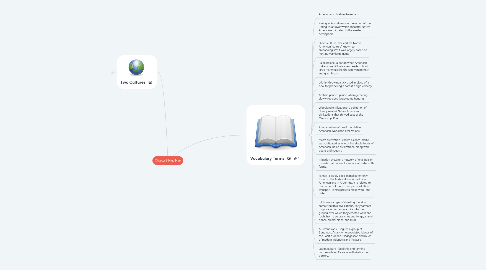
1. Two Cultures
1.1. Chavin
1.1.1. Similar to contemporary Olmec civilization Use of llama facilitated trade and led to construction of roads Chavín hegemony due to trade and cultural exchange, rather than political power or military might Priests organized irrigation projects, supervised labor force Religion centered on worship of feline/eagle/serpent god Priests, dressed as jaguars or eagles staged elaborate ceremonies with smoke and waterworks
1.1.1.1. Chavin de Wantar – capital city 10,000 ft. above sea level Strategic location on trade routes Pilgrimage site with terraced shrine and blunt-tipped pyramid Chavin successfully fed dense population in hard-to-reach locations Chavin culture collapsed due to Overpopulation Increased social stratification Rising militarism Influenced succeeding Peruvian kingdoms
1.2. Adena
1.2.1. Located between Peruvian coast and Andean foothills Great variety of terrains: coastal plains, lush tropical river valleys, grassy plateaus, frigid mountains Each area developed ingenious means to exploit resources Traded a variety of nutritious foods: Fishmeal (coast) Potatoes, root vegetables (highlands) Fruit, sweet potatoes, pineapples, manioc (tropical forests) Quinoa, native grain, used as fodder Later, maize became a staple
1.2.1.1. As coastal regions grew drier, people moved inland Learned to divert rivers to irrigate crops Grew cotton, squash, lima beans, coca, chili Intensive agriculture with food surpluses supported elites who Organized village clans Oversaw irrigation Supervised religious activities and ceremonial centers
1.2.1.1.1. Rival chiefdoms arose after 1800 BCE Cities had U-shaped ceremonial centers Religious sites had streams, gardens, pyramids to emulate nature, the abode of Andean spirits Cloth-wrapped mummies of ancestors were revered Peruvian textiles -- exquisite Andean art Used as status symbol Weaving was labor of religious devotion Means of spreading culture and religion Andeans used quipus (knotted ropes) to calculate and record data Also crafted braided rope bridges over Andean canyons

